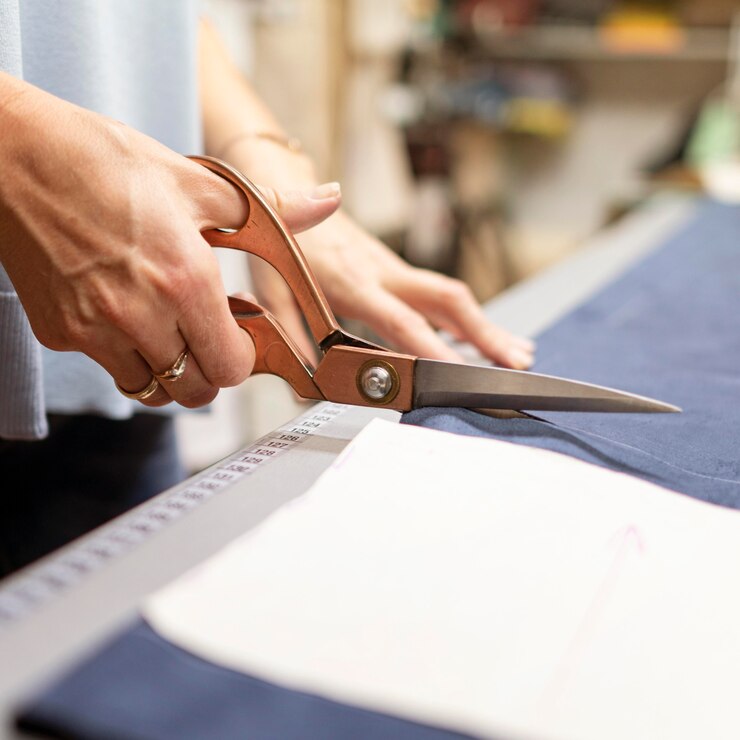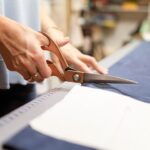Introduction to Stitch Types
When it comes to sewing, the world of Nahttypen, or stitch types, opens up a universe of possibilities. Whether you’re mending a favorite garment or creating intricate designs, understanding different stitches can elevate your projects from ordinary to extraordinary. With so many options available—ranging from simple hand stitches to complex machine techniques—it’s essential for every sewer to grasp these fundamentals.
Have you ever wondered why some seams are stronger than others? Or how certain decorative stitches can add flair and personality? In this comprehensive guide, we’ll explore the various stitch types that will enhance your sewing skills. By the end of our journey through Nahttypen, you’ll be well-equipped with knowledge and confidence to choose the right stitches for any project! Let’s dive in and unravel the art of stitching!
Hand Stitches vs. Machine Stitches
Hand stitches and machine stitches each have their own charm. Hand stitching offers a personal touch, allowing sewers to control every movement. It’s perfect for delicate fabrics or intricate designs that require precision.
On the other hand, machine stitches provide speed and efficiency. With just a push of a button, you can tackle large projects in no time. Modern sewing machines come equipped with various stitch types, making them versatile tools for any sewer.
Each method has distinct advantages depending on the project at hand. Hand stitches are great for repairs or adding unique details to garments. Machine stitches shine when constructing seams or quilting layers together.
Choosing between these techniques often comes down to the desired outcome and your level of comfort with each approach. Experimenting with both methods will broaden your skills and enhance your creativity in sewing.
Basic Stitches for Beginner Sewers
Basic stitches are essential for beginner sewers to master. They form the foundation of all sewing projects and help build confidence.
The straight stitch is your go-to. It’s perfect for seams, hems, and everyday repairs. Simple yet effective, it creates a clean line that looks professional.
Next up is the zigzag stitch. This one adds flexibility and prevents fraying on fabric edges. It’s especially useful when working with stretch materials.
The basting stitch comes in handy too. Use it to temporarily hold layers together before you sew permanently. It makes fitting garments much easier.
Don’t overlook the whip stitch either! Ideal for hemming or finishing raw edges, this hand-stitch technique offers a discreet finish that won’t take away from your project’s design.
By practicing these basic stitches, you’ll gain valuable skills while enjoying every step of your sewing journey.
Decorative Stitches for More Advanced Sewers
Decorative stitches add a touch of artistry to your sewing projects. They transform simple seams into stunning visual elements.
Advanced sewers often explore various techniques to create unique patterns. For example, satin stitch and zigzag stitch are popular choices for embellishing fabric edges or adding intricate details.
Functional yet beautiful, these stitches can enhance garments, quilts, and accessories. Using contrasting thread colors amplifies their impact, allowing you to showcase your creativity.
Another exciting opportunity is the use of heirloom stitching. This technique combines decorative elements with functional ones, blending beauty seamlessly with purpose.
Don’t shy away from experimenting with specialty feet on your machine. These tools can help achieve complex designs that elevate any project beyond ordinary limits.
With practice and imagination, decorative stitches will become a signature part of your sewing repertoire.
Common Uses for Different Stitch Types
Different stitch types serve distinct purposes in sewing, each playing a crucial role in the outcome of your projects.
For basic seams, the straight stitch is a go-to choice. It’s ideal for joining fabric pieces together securely and works well on most fabrics.
Zigzag stitches are perfect for stretchable materials like knits or jerseys. They allow the fabric to move without breaking the seam, ensuring durability and flexibility.
When working with hems, blind hem stitches offer an invisible finish that looks polished from both sides. This technique is especially valuable for garments where aesthetics matter.
For decorative elements, satin stitches can elevate any project. These dense fills create stunning designs on quilts or embellishments on clothing.
Each stitch brings its unique flair and functionality to your workbench—knowing when and how to use them makes all the difference.
Troubleshooting Stitch Problems
Stitch problems can be frustrating, but identifying the issue is the first step to resolution. Start by inspecting your thread tension. If stitches are too tight or loose, adjust the tension dial on your sewing machine.
Next, check your needle. A bent or dull needle can cause skipped stitches and uneven seams. Replace it with a new one that’s appropriate for your fabric type.
Thread quality matters as well. Using low-quality threads may lead to snags and breakage during sewing. Opt for reputable brands designed for specific projects.
Don’t forget about the bobbin! A misaligned or improperly wound bobbin can create havoc in stitch formation. Make sure it’s correctly inserted into its case.
Consult your sewing machine manual when troubleshooting persistent issues—often, there are specific tips tailored to each model that can save you time and effort.
Tips for Choosing the Right Stitch Type
Choosing the right stitch type can make all the difference in your sewing project. Start by considering the fabric you’re using. Lightweight fabrics typically require finer stitches, while heavier materials benefit from more robust options.
Think about the function of your project as well. If durability is key, opt for a straight stitch or zigzag that can withstand wear and tear.
Don’t overlook aesthetics either! Decorative stitches can add flair to simple garments or accessories but may not be suitable for every project.
Always test out different stitches on scrap fabric first. This allows you to see how they perform without risking your main piece.
Trust your intuition. Let your creativity guide you when selecting a stitch type that resonates with your vision.
Conclusion
Choosing the right stitch type is essential for any sewing project. Understanding various Nahttypen can elevate your work, whether you’re a beginner or an experienced sewer. Take time to practice basic stitches before moving on to more complex designs that add flair and personality.
Common issues like skipped stitches or thread bunching often stem from using the wrong type of stitch or improper technique. Familiarize yourself with troubleshooting methods to enhance your skills and avoid frustration.
Experimentation is key! Don’t hesitate to try different stitches based on fabric types and project requirements. As you become comfortable with each stitch, you’ll find it easier to express your creativity through sewing projects.
Embrace the journey of learning about Nahttypen, as every new technique opens doors for endless possibilities in crafting unique pieces. Whether you’re repairing clothes or creating stunning handmade items, knowing how and when to use different stitches will unlock a world of potential in your sewing endeavors.







